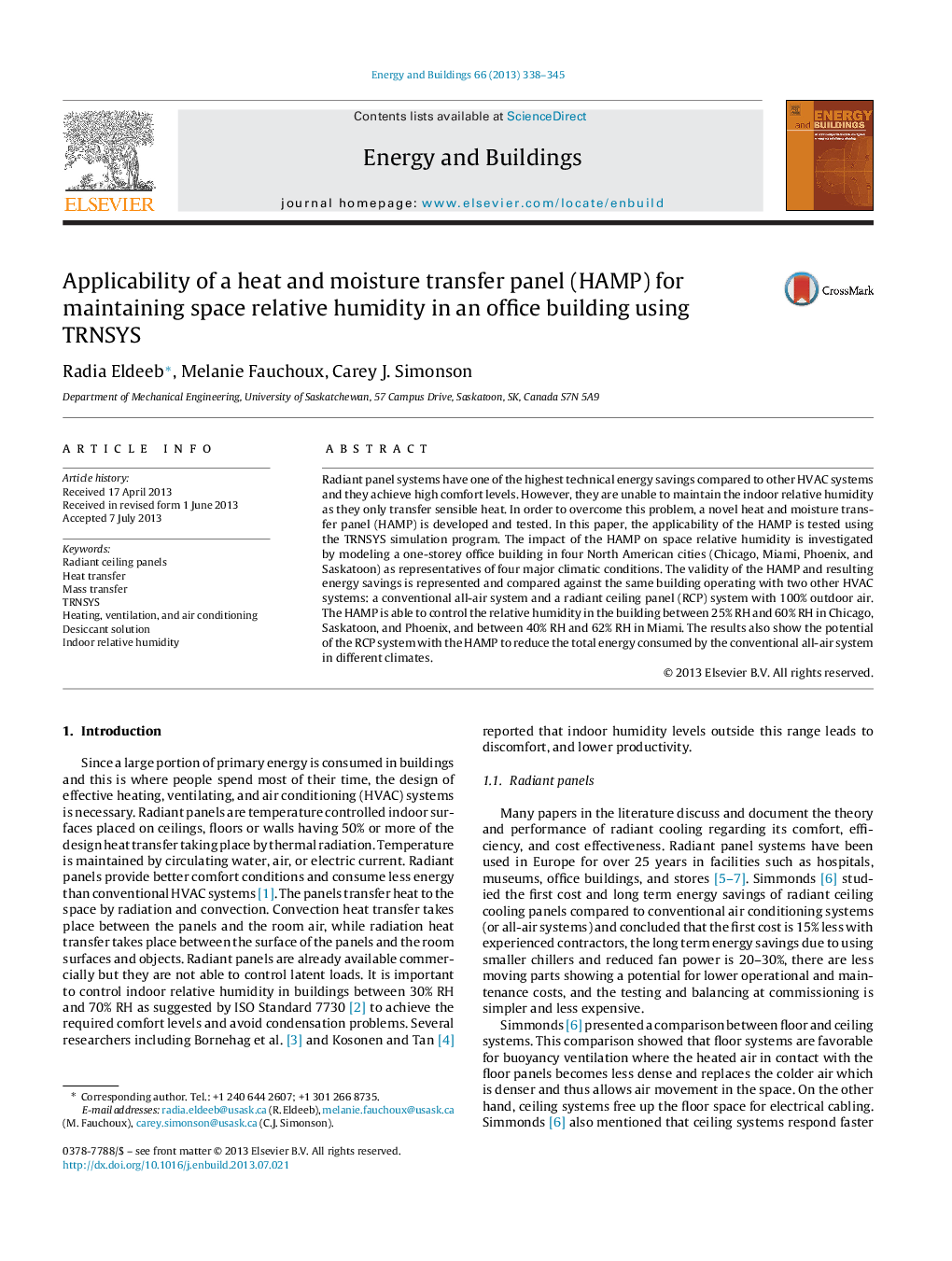| Article ID | Journal | Published Year | Pages | File Type |
|---|---|---|---|---|
| 6734702 | Energy and Buildings | 2013 | 8 Pages |
Abstract
Radiant panel systems have one of the highest technical energy savings compared to other HVAC systems and they achieve high comfort levels. However, they are unable to maintain the indoor relative humidity as they only transfer sensible heat. In order to overcome this problem, a novel heat and moisture transfer panel (HAMP) is developed and tested. In this paper, the applicability of the HAMP is tested using the TRNSYS simulation program. The impact of the HAMP on space relative humidity is investigated by modeling a one-storey office building in four North American cities (Chicago, Miami, Phoenix, and Saskatoon) as representatives of four major climatic conditions. The validity of the HAMP and resulting energy savings is represented and compared against the same building operating with two other HVAC systems: a conventional all-air system and a radiant ceiling panel (RCP) system with 100% outdoor air. The HAMP is able to control the relative humidity in the building between 25% RH and 60% RH in Chicago, Saskatoon, and Phoenix, and between 40% RH and 62% RH in Miami. The results also show the potential of the RCP system with the HAMP to reduce the total energy consumed by the conventional all-air system in different climates.
Keywords
Related Topics
Physical Sciences and Engineering
Energy
Renewable Energy, Sustainability and the Environment
Authors
Radia Eldeeb, Melanie Fauchoux, Carey J. Simonson,
